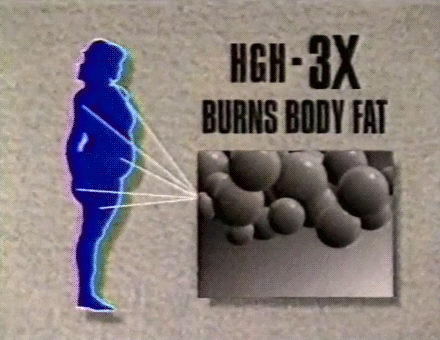#body fat
Text
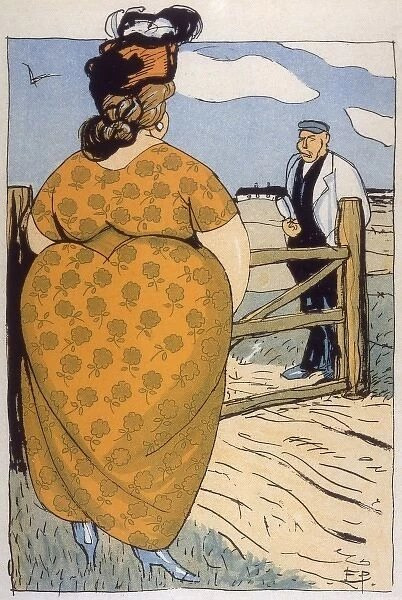
How do we break it to boomers with actual brain damage and nostalgic brainrot, and the 'tradwife' thirsting Andrew Tate fans that bodyfat, average attire, an overall lack of professional haircare or makeup, and non-conventionally attractive women existed and represented the vast majority of women across all of history?




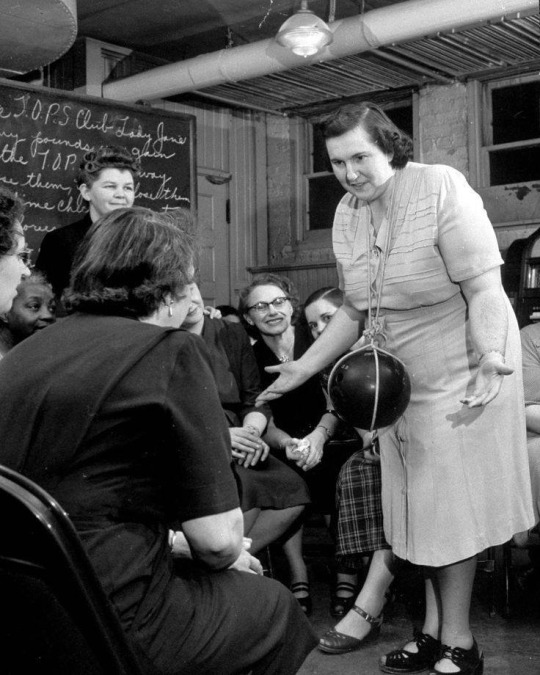

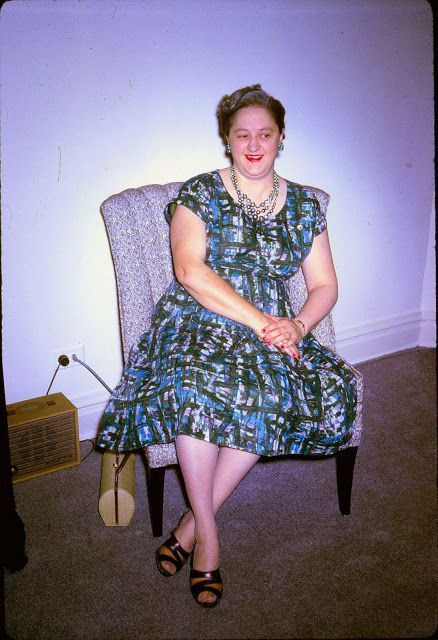
And that, yes, in fact, their belief that "all women were hot skinny super models" in x timeframe is because they keep posting images of fashion models, actresses, idealized pinup art, and creepshots of actual teenage girls instead of middle aged, elderly and ordinary women from whatever era. Man, history sure was an insane person's exact perfect paradise consisting solely of people specifically they were attracted to--when filtered through a cherry picked lens of solely famous glamor girls instead of just women workers, family photos and life events taking place anywhere outside of Hollywood.


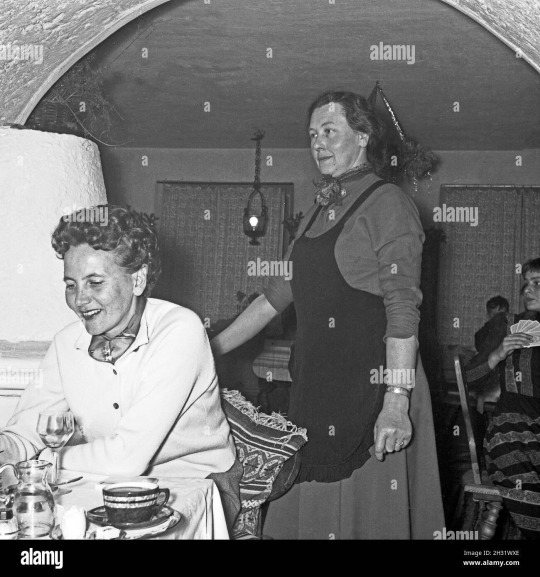



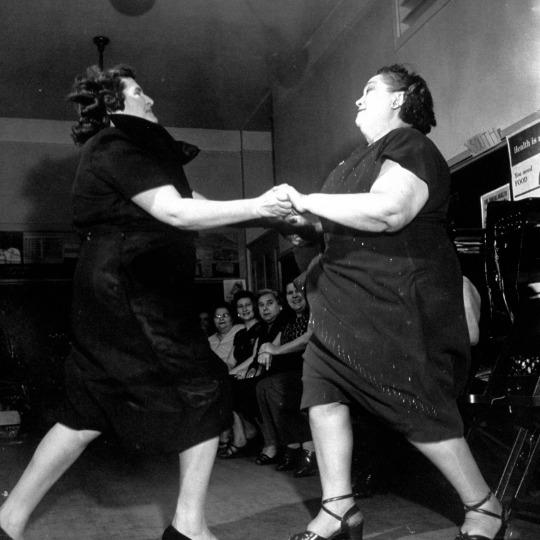
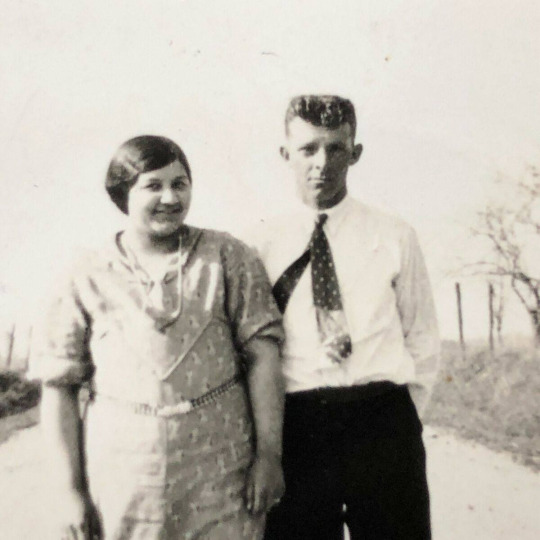
It really does irk me that one day people will assume all of the 21st century consisted of women who looked like whichever three actresses are most remembered one day and a few odd instagram filtered images--because already, a massive wealth of evidence already exists to the contrary for all of prior history and people are still somehow convinced everyone on Earth was a size zero with perfect hair and makeup for all of human history. That's just not how anything works. It's not how women work. It's not how humans work.
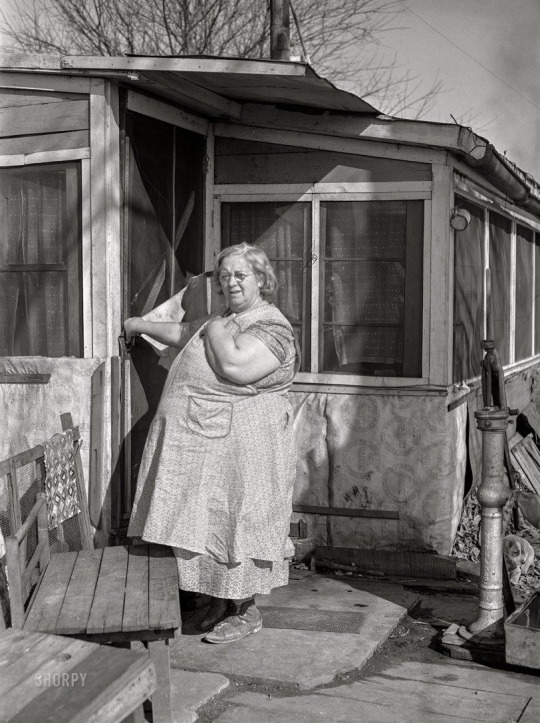
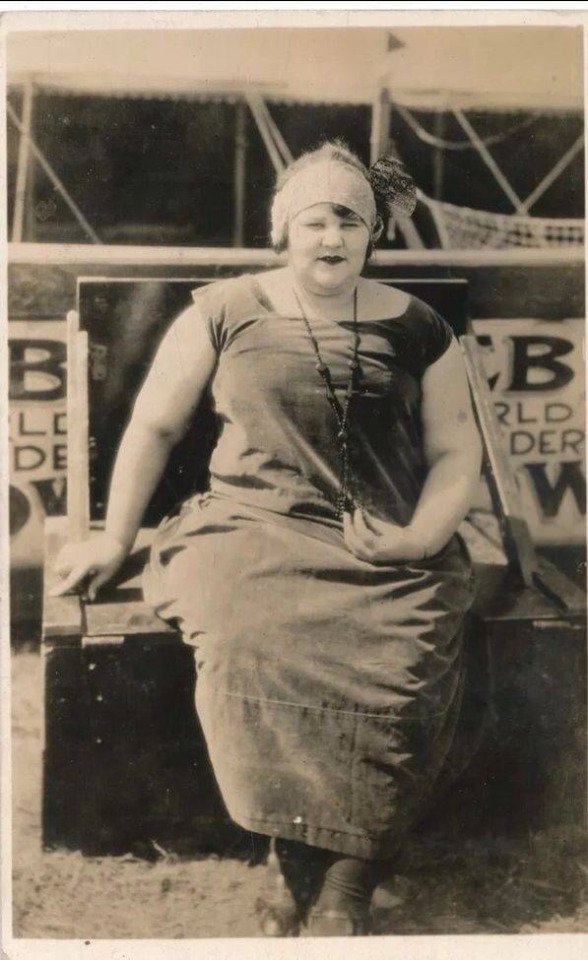



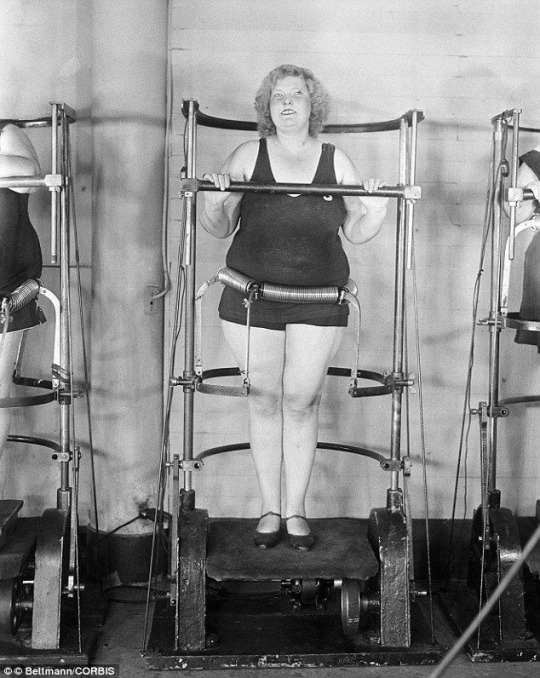
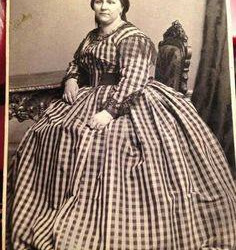
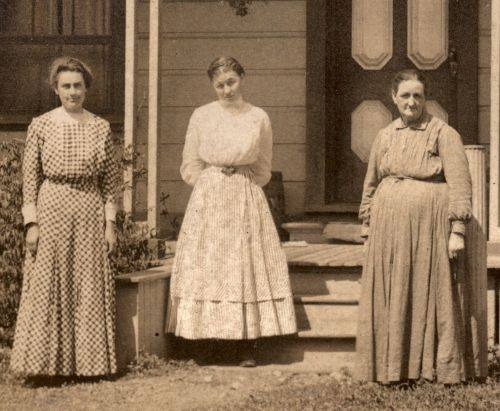



Another fun fact, the majority of surviving articles of clothing from eons ago were extremely petite, extremely glamorous, and unfathomably tiny. You know why? Because they ..weren't worn. This is a well known example of survivors bias in the fashion industry. Expensive gowns and teeny martini dresses were usually only worn once or twice, if not solely worn by manikins in high end stores. Most people kept a consistent and small wardrobe for their entire lives. New clothes were rare, often custom fit or taylored by family at home, or hand-me downs from sibling to sibling. These clothes that were worn to death and destroyed from decades of use were thrown away. They didn't survive to the modern era because they were overly worn, large, and unglamorous.
Think of it this way, you might save your prom dress or your wedding dress but you're not saving the teeshirt with spaghetti stains on it for future generations to see. Why would you? Those are the clothes that don't survive.

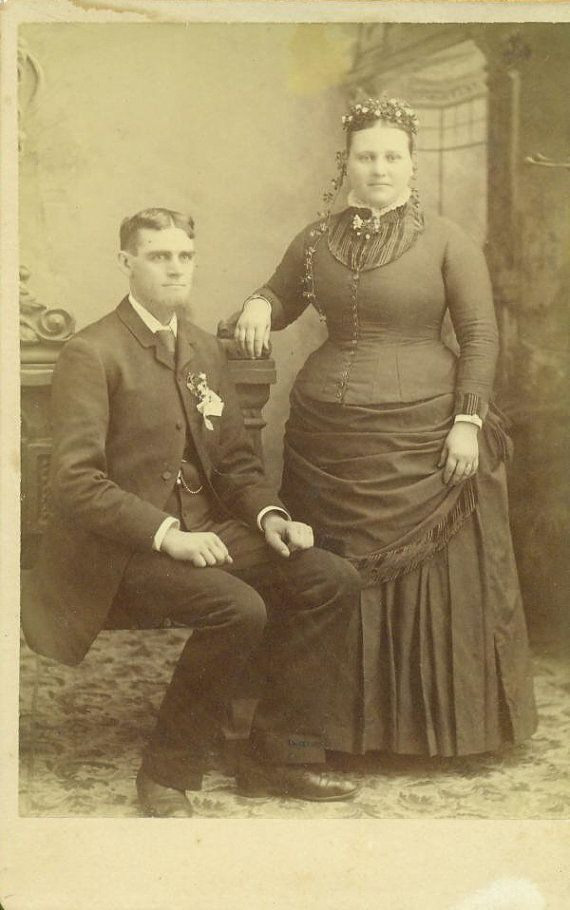
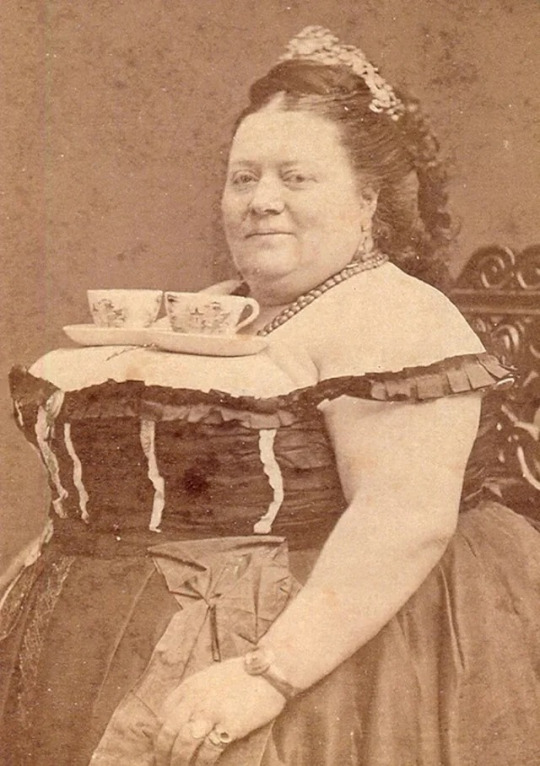
4K notes
·
View notes
Text
Omg, me( ╹▽╹ )

#anabrasil#ed br#t.a br#tw ed ana#tw ana diary#anadiet#tw ed diet#dieta#garotas bonitas não comem#pessoas bonitas não comem#garotos bonitos não comem#fat#body fat#i want to ⭐️ve
149 notes
·
View notes
Text
Body Fat in Greco-Roman Antiquity (transcribed article)
A long time ago I made a post about the depictions of Dionysos/Dionysus/Bacchus as fat. You can read it here if you want - but that was just me going on about stuff taken left and right, nothing too serious, just thoughts.
I want to bring you today a serious article about the perception of the fat body in Ancient Greece and Ancient Rome. This article is actually a page hosted on "Google Arts and Culture", titled "In the Flesh: Body Fat in Ancient Art". It was created by the J. Paul Getty Museum, and you can read it all here. But the website has a really specific design that makes it hard for some people to read the page, so I thought why not help share it around by copying it below. Of course, nothing belongs to me, I am just transcribing it all (plus copying the images). All credits go to the J. Paul Getty Museum.
In the Flesh: Body Fat in Ancient Art
Ancient Greek and Roman writers criticized bodies of different sizes for a variety of reasons. But in works of art, body fat was often depicted in ways that defy our expectations.
A Different Ideal
Terms like "overweight" and "underweight" originate in modern medicine's concept of an ideal body weight. Calculated to minimize mortality risk, this medically desirable weight varies based on such factors as height, age, and fitness.
Ancient Greeks and Romans compared the appearance of their bodies with respect to a more abstract ideal.
For the ancient physician Galen, measurements for the ideal body were expressed centuries earlier in the Canon, a treatise on statue proportions by the 5th-century BC sculptor Polykleitos:
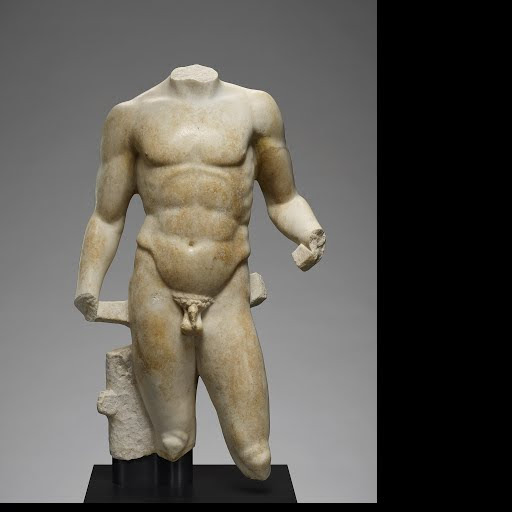
(Male torso, about A.D. 100, Unknown)
"[Neither the overweight nor the underweight body] is in due proportion. But the body which equals the Canon of Polykleitos reaches the summit of complete symmetry."
— Galen, Ars Medica K 343
For the ancient Greeks, precisely measured weight was less important than the perception of symmetry and balance.
They had a term for this desirable state of wellness: εὔσαρκος (eusarkos), meaning "well-fleshed" or "fleshy."
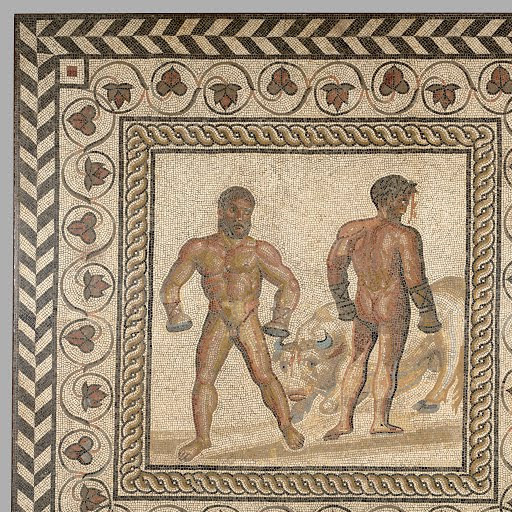
(Mosaic floor with combat between Dares and Entellus, A.D. 175-200, Unknown)
Because the Greeks prized moderation in all things, bodies or behaviors that stood out from this ideal were targets of criticism. Perhaps surprisingly, this criticism also applied to muscular athletes, such as wrestlers and boxers, who required constant high-calorie diets.
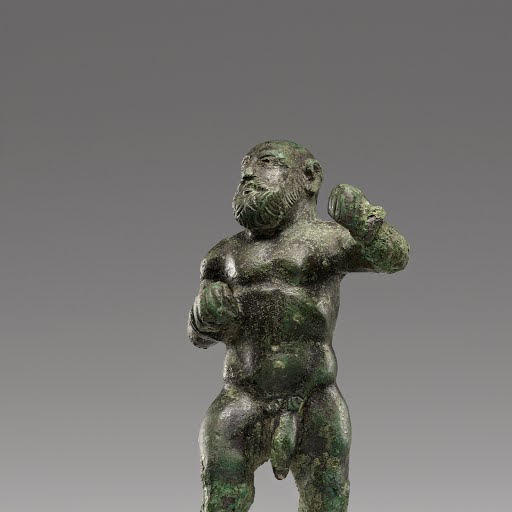
(Statuette of a boxer, unknown)
Big Bodies in Comedy
Mockery of those who ate more or less than necessary was one way to impose social compliance and maintain political order.

(Apulian red-figure bell krater, 370-360 BCE, Cotugno painter)
Many Greek and South Italian vases often depict comic actors wearing "fat suits" (as well as a mask and a phallus) to embody popular character types.
Actors used such props as comic gags, and vase painters often represented them with great care.

On this Apulian mixing bowl, lines extending across the actor's chest make clear that his large, sagging breasts are artificial. His belly is unnaturally circular and hangs too low — further evidence that he is wearing a costume.
It seems that the painter wanted to pointedly emphasize the exaggerated nature of such costumes.
Ample Satyrs
Not all depictions of larger bodies were mocking. Animal ears and the double flute identify this figure as a satyr, or a woodland deity. He reclines in a pose that would remind viewers of the satyrs' master, the wine god Dionsyos, who is often depicted reclining at a banquet.
Instead of on a fancy couch, the chubby old satyr rests on a full wineskin!

(Fragment of an Apulian squat Lekythos, 350-325 BC, Darius painter)
Under tufts of gray hair, lines accentuate the curving folds of the old satyr's body. Unlike the ridiculously artificial bodies of the padded actors, the satyr's big, hairy body is gentle and soft.
Like the plump pillow on which he rests, the satyr appears comfortable and at ease. This scene is meant to be lighthearted, and does not appear cruel or mocking.
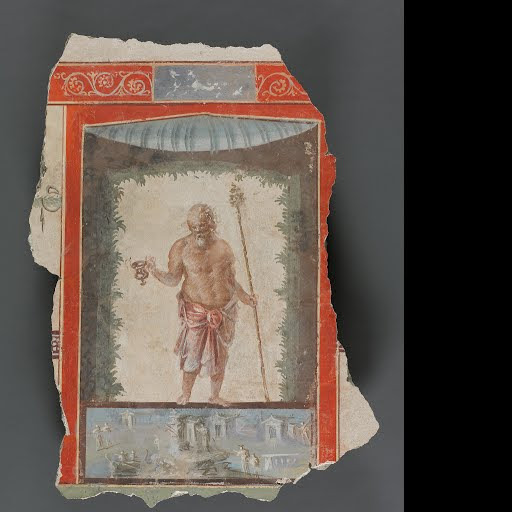
(Fresco fragment depicting an old Silenos with kantharos and thyrsos, AD 1-79, Unknown)
Similar attention to detail can be seen in this Roman wall painting of the old satyr Silenus. The painter’s skillful use of red shadows and pink highlights builds up the volume of his chest and stomach, which appear both soft and sturdy at the same time.
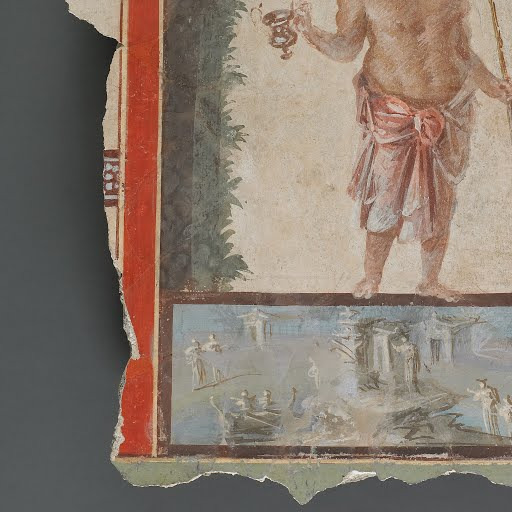
These fleshly older satyrs were symbols of pleasure-seeking and leisure.
Fragile Bodies on the Margins
Skinny or underweight bodies were also criticized, in part because of the association between emaciation and illness. Thinness could also negatively reflect on one's character.

(Miniature skeleton, unknown)
Ancient authors often noted a person's skinny frame as a way of pointing out their intellectual or social irrelevance.
The association of thinness and powerlessness is sometimes exploited in representations of enslaved individuals, domestic servants, and those otherwise marginalized in society.

(Finial with a resting youth, unknown)
On this figurine of a resting youth, the individually shaped ribs might suggest that the figure is undernourished.

In depictions of older individuals, such as this statuette of an old woman, underweight features are often used to indicate frailty.

(Statuette of an old woman, 100-001 BCE)
Such subjects were popular in the Hellenistic period (c. 330-31 BC) —a time of unprecedented social inequality — and consciously aestheticized:
"When we see emaciated people we are distressed, but we look upon statues and paintings of them with pleasure, because imitation, as such, is attractive to the mind's nature."
- Plutarch, Quaestiones convivales 5.1.
Size and Gender
Body fat was also linked to gender, especially in the Roman Empire. While bodies of women were routinely criticized by Roman authors, fluctuation in weight did not render them less feminine. By contrast, both fat and skinny men were explicitly mocked as effeminate, lacking either physical strength or stamina.
Biographies of unpopular Roman emperors often weaponize their body size in this way. Of the emperor Galba, the biographer Suetonius writes, "it is said that he was a heavy eater," immediately before turning to rumors about his inclinations towards "unnatural desires."
Such fat-shaming seems not to have mattered to the emperors themselves. Their official portraits show little concern for concealing the fullness of their faces.
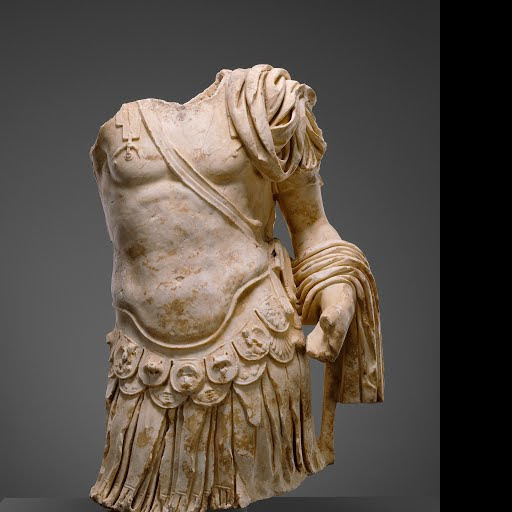
(Torso of a cuirassed statue, unknown)
The situation may have been different in military affairs. The anxieties Roman men felt about their bodies can be seen in their choice of armor. Their bronze breastplates were decorated with chiseled pectorals and washboard abs, creating the illusion of a skin-tight fit.
It is unlikely that such breastplates were meant to deceive, any more than the fat suits of comic actors. What they offered to their wearers was the illusion of inhabiting — for a moment — the ideal body of a Polykleitan statue.
Divine Softness
A closer look at ancient art reveals that the bodies of gods were sometimes less harshly judged than those of mortals.
Depictions of certain gods regularly focus on the softer parts of their bodies.
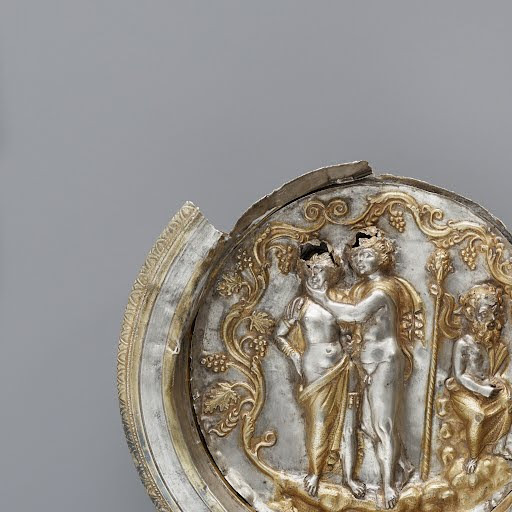
(Bowl with a medallion depicting Dionysos and Ariadne, unknown artist, -100)
The maker of this Hellenistic silver medallion went out of their way to show the curvy bodies of the wine god Dionysus and his wife Ariadne, engraving lines under their bellies to highlight the sensuality of their encounter.
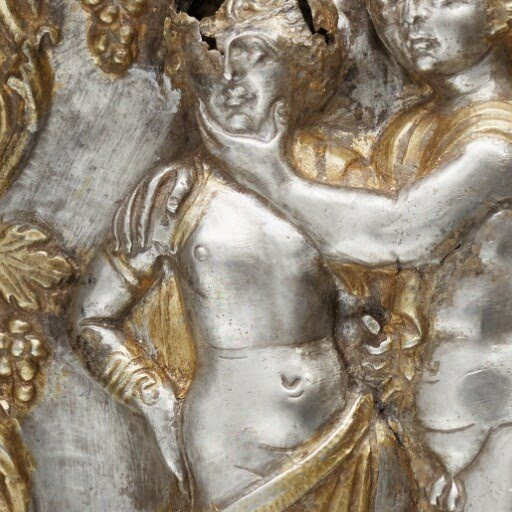
Some popular representations of the love goddess Venus, such as the so-called "Crouching Venus" type, unquestionably emphasize the fleshiness of her body.

Statue of a Crouching Venus Statue of a Crouching Venus, Unknown, A.D. 100–150, Provenant de la collection : The J. Paul Getty Museum
Modern observers have highlighted the positive associations between fleshiness and fertility expressed by a variety of Greek and Roman authors, but there is more to the story.
The rolls of flesh on the goddess's belly also gave the ancient sculptor a means of creating a very intimate encounter between viewer and goddess.
To ancient viewers of all ages and genders, accustomed to seeing gods represented solemn and upright, the crouching pose allowed a glimpse into the goddess's private world.
The crouching goddess seemed more approachable to worshippers, in part because her body moved in ways they could recognize from their own lived experience. The softness of Venus’s body made the cold, hard marble come to life.
#ancient greece#ancient rome#body positivity#fatphobia#greek gods#body fat#venus#dionysus#dionysos#ariadne#roman emperors#satyrs#underweight#satyr#silenus#ancient art#ancient greek art#body types#art#weight#ancient greek society#roman empire
21 notes
·
View notes
Text
why does eVERY LITTLE BIT of fat on my body make me feel SO GROSs
#😭#fat#body fat#bmi#weightloss#motivation#goals#words#text#thinspo#th1n$po#th1nsp1ration#mental illness#mental health#ed not sheeran#ed things#ed thoughts#ana#rexiia
17 notes
·
View notes
Video
10 Steps to Lower Your BMI and Promote Healthy Weight Loss
A step-by-step guide on how to healthily lower your body mass index (BMI) as an effective way to lose weight, speed up your metabolism, and improve your overall health.
https://www.soovy.club/blog/how-to-lose-weight-ways-to-boost-metabolism-tips-to-reduce-bmi
#BMI#weight loss#healthy weight loss#metabolism#healthy eating#exercise#fitness#nutrition#body fat#how to lose weigh with yoga#how to lose weight#weight loss tips#lose weight#weight management#healthy lifestyle#sustainable weight loss#lifestyle
58 notes
·
View notes
Text
This is a clip from an episode of the cartoon Shnookums and Meat that once aired on the short-lived Disney series Raw Toonage. The name of the episode Weight for me. Here in this episode the Dog and Cat duo put on a huge amount of weight after getting lazy.
#Disney Afternoon#Raw Toonage#Shnookums and Meat#cat#dog#feline#canine#gaining weight#disney#fat belly#chubby#fatso#obesity#big tummy#body fat#overweight#fatty#extremely obese#sumo#big gut#fat gut#obese belly#tummy bump#belly bump
55 notes
·
View notes
Text
I measured my body fat percentage today using tape and the US Navy method. I am currently at 29.4% body fat. I honestly think I underestimated how bad my body composition had gotten.
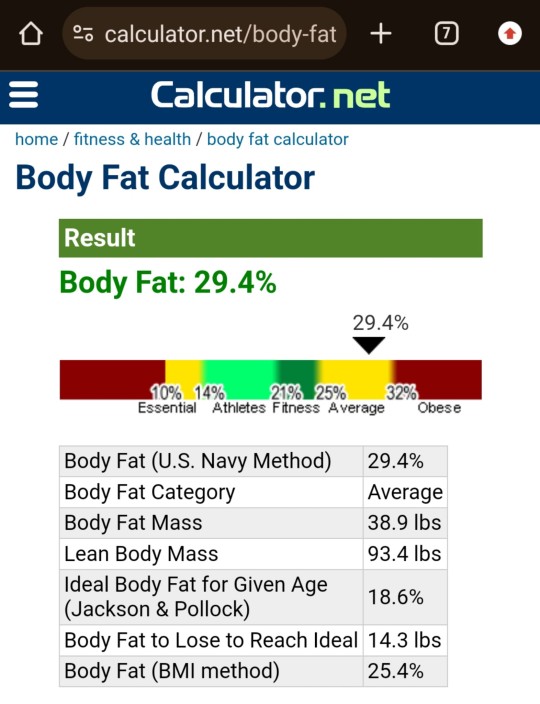
I'm still waiting on my calipers to arrive, but I think the US Navy method using tape is definitely accurate. It was a wake-up call for me to see that the ideal body fat for my age is 18.6%, and the body fat I have to lose to reach my ideal body fat percentage is 14.3 lbs.
It was definitely confronting, but also reassuring in the sense that I knew my body didn't feel as good as it used to, and regardless of others insisting I am completely fine I really am not as healthy as I can be.
My back hurts due to the excess weight around my chest, and my feet hurt/I get fatigued easily standing up for long periods of time.
#healthy diet#caloric deficit#healthy eating#healthy weight loss#macros#self care#tracking macros#health & fitness#self development#health is wealth#body recomposition#body fat
4 notes
·
View notes
Text
How can I get 5% body fat? What will I need to eat?

First of all, if you can do dedication, discipline and hard work, I recommend you to read the rest of the article, otherwise you may suffer a little ;)
Achieving 5% body fat is a very low level of body fat, and it requires a lot of dedication, discipline, and hard work. It’s important to keep in mind that this level of body fat is not sustainable for most people and may have negative health consequences.
To reach 5% body fat, you will need to follow a strict diet and exercise regimen that is tailored to your specific needs and goals. Here are some general guidelines that can help you get started:
Follow a calorie-restricted diet: To lose body fat, you will need to consume fewer calories than you burn each day. Aim for a moderate calorie deficit of around 500–1000 calories per day.
2. Focus on lean protein: Eating plenty of lean protein can help you build and maintain muscle while losing body fat. Good sources of lean protein include chicken, turkey, fish, lean beef, and tofu.
The best products I can recommend: https://amzn.to/3mvW661, https://amzn.to/3ZJQwuV, https://amzn.to/3L5lIkw
3. Eat healthy fats: Healthy fats such as avocados, nuts, seeds, and olive oil can help you stay satiated and provide important nutrients for your body.
4. Limit carbohydrates: Carbohydrates can be an important source of energy, but if you are trying to reach a very low body fat level, you will need to limit your intake of carbs. Focus on eating complex carbohydrates such as whole grains and vegetables, and avoid processed foods and sugary snacks.
The best products I can recommend: https://amzn.to/3IXjLnn, https://amzn.to/3F3OcXN, https://amzn.to/3IVMSYm
5. Stay hydrated: Drinking plenty of water is important for overall health and can help you stay full and avoid overeating.
The best products I can recommend: https://amzn.to/3yeTwUC, https://amzn.to/3IVMSYm
6. Exercise regularly: Incorporate both cardiovascular and strength training exercises into your routine to help you burn fat and build muscle.
It’s important to consult with a healthcare professional before making any significant changes to your diet or exercise regimen, especially if you have any underlying health conditions. They can help you develop a plan that is safe and effective for you.
#weight loss#diet#healthy eating#healthy food#health#metabolism#healthy weight loss#calorias#nutrition#fat loss#lifestyle changes#healthy lifestyle#meal planning#portion control#losing weight#weight loss diet#food#body composition analyzers market#body fat#caloric deficit#carbohydrates#protein#healthy fats#low calorie
12 notes
·
View notes
Text
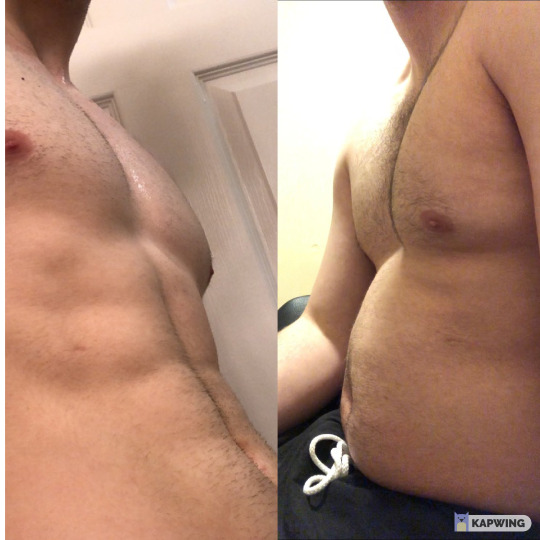
I still have abs right??
#chubby#dad bod#pudgy tummy#chubby guy#belly pics#gained weight#getting out of shape#growing moobs#out of shape#body fat
48 notes
·
View notes
Text
Snooze-Inducing Yoga: 8 Poses to Enhance Your Bedtime Routine for a Deeper Sleep

8 Poses to Enhance Your Bedtime Routine for a Deeper Sleep
Are you struggling to get a good night's sleep? If so, incorporating yoga into your bedtime routine may be the answer you've been looking for. In this article, we will explore eight snooze-inducing yoga poses that can enhance your bedtime routine and promote a deeper, more restful sleep.
Yoga has long been known for its ability to reduce stress and promote relaxation. By practicing these specific poses before bed, you can create a calming and peaceful environment that can help you unwind and prepare your body for sleep. From gentle stretches to soothing breathing exercises, these poses are designed to quiet the mind, release tension, and encourage a state of tranquility.
The importance of a bedtime routine for better sleep
Having a consistent bedtime routine is essential for getting a good night's sleep. Our bodies crave routine and thrive on predictability. When we establish a regular routine, our body's internal clock, or circadian rhythm, becomes regulated, making it easier for us to fall asleep and wake up naturally.
Incorporating yoga into your bedtime routine can be a powerful tool for improving sleep quality. The practice of yoga helps to calm the nervous system, reduce stress, and promote relaxation. By engaging in a series of gentle movements and stretches, you can release tension from your body and bring your mind into a state of tranquility, preparing yourself for a restful night's sleep.
Understanding the connection between yoga and sleep
Yoga and sleep share a deep connection that goes beyond the surface level. Both practices aim to create a sense of balance and harmony within the body and mind. Yoga helps to alleviate physical and mental stress, which are often the culprits behind restless nights and insomnia.
The practice of yoga activates the parasympathetic nervous system, also known as the "rest and digest" response. This activates the body's relaxation response, lowers heart rate, and promotes a sense of calmness. By engaging in yoga before bed, you are essentially signaling to your body that it is time to wind down and prepare for sleep.
Additionally, yoga helps to regulate the breath, which plays a crucial role in promoting relaxation and sleep. By focusing on slow, deep breathing during your practice, you stimulate the body's relaxation response and quiet the mind, allowing for a peaceful transition into sleep.
Benefits of practicing yoga before bed
The benefits of practicing yoga before bed extend far beyond a deeper, more restful sleep. Incorporating yoga into your bedtime routine can have a positive impact on various aspects of your life, including your physical health, mental well-being, and overall quality of life.
One of the primary benefits of bedtime yoga is stress reduction. Yoga helps to release tension from the body and quiet the mind, allowing you to let go of the stresses and worries of the day. By reducing stress levels, you can experience improved mood, increased energy levels, and enhanced overall well-being.
Another benefit of practicing yoga before bed is improved flexibility and mobility. As we age, our muscles and joints can become stiff and tight, leading to discomfort and decreased range of motion. By engaging in gentle stretches and movements before bed, you can help to alleviate muscle tension, increase flexibility, and promote better posture.
Furthermore, bedtime yoga can also aid in digestion and relieve digestive issues. Many yoga poses gently massage the internal organs, stimulating digestion and promoting healthy gut function. By incorporating these poses into your bedtime routine, you can support optimal digestion and prevent discomfort that may disrupt your sleep.
Preparing your space for a bedtime yoga routine
Before diving into your bedtime yoga practice, it's essential to create a peaceful and inviting space that promotes relaxation and tranquility. Your bedroom should be free from distractions and clutter, allowing you to fully focus on your practice and prepare your mind and body for sleep.
Start by dimming the lights or using soft, warm lighting to create a calming atmosphere. Consider using candles or soft lighting fixtures that emit a warm and gentle glow. This will help to signal to your body that it's time to wind down and prepare for sleep.
Next, clear any clutter from your space. A cluttered environment can create mental and physical tension, making it challenging to relax and unwind. Take a few moments to tidy up your space, ensuring that everything is in its proper place. This simple act can help to create a sense of order and calmness in your surroundings.
Finally, consider incorporating aromatherapy into your bedtime routine. Certain scents, such as lavender and chamomile, have been shown to promote relaxation and improve sleep quality. Use essential oils or scented candles to infuse your space with these calming scents, enhancing the overall atmosphere of tranquility.
By taking the time to create a welcoming and peaceful environment, you are setting the stage for a restful night's sleep and a deeply satisfying yoga practice.
Warm-up poses to relax your body and mind
Before diving into the specific bedtime poses, it's important to warm up your body and prepare it for movement. These gentle warm-up poses will help to release tension, increase blood flow, and cultivate a sense of relaxation in your body and mind.
Child's Pose: Start by kneeling on your mat with your knees wide apart and your toes touching. Sit back on your heels and slowly lower your torso down, resting your forehead on the mat. Extend your arms forward or alongside your body, palms facing up. Take deep breaths, allowing your body to melt into the pose and releasing any tension or stress.
Cat-Cow: Come onto all fours with your wrists directly under your shoulders and your knees under your hips. Inhale, arch your back, and lift your gaze towards the ceiling, creating a gentle extension in your spine (cow pose). Exhale, round your back, and tuck your chin towards your chest, creating a gentle flexion in your spine (cat pose). Continue flowing between these two poses, syncing your breath with your movements.
Standing Forward Fold: Stand tall with your feet hip-width apart. On an exhale, slowly hinge forward at the hips, reaching your hands towards the ground. Allow your upper body to relax and hang heavy, releasing any tension in your neck and shoulders. Bend your knees slightly if needed to maintain a gentle stretch in the back of your legs.
Read More: How To Do Chair Yoga Poses: A Guide To Getting Started
These warm-up poses will help to gently awaken your body and prepare it for the deeper stretches and relaxation ahead. Take your time with each pose, focusing on your breath and allowing your body to move with ease and comfort.
Gentle stretches to release tension and promote relaxation
After warming up your body, it's time to move into gentle stretches that will help to release tension and promote relaxation. These poses are designed to target areas of the body that often hold stress, such as the neck, shoulders, and hips. By releasing tension in these areas, you can create a sense of ease and relaxation throughout your entire body.
Neck Rolls: Sit comfortably with your spine tall and your shoulders relaxed. On an inhale, gently drop your right ear towards your right shoulder, allowing your left shoulder to relax. As you exhale, roll your chin towards your chest, bringing your left ear towards your left shoulder. Continue this circular motion, moving at your own pace and allowing your breath to guide you. After a few rounds, switch directions.
Shoulder Rolls: Sit or stand tall with your arms relaxed by your sides. Inhale, roll your shoulders up towards your ears, and exhale, roll them back and down. Repeat this movement, allowing your breath to guide you and releasing any tension or tightness in your shoulders.
Seated Forward Fold: Sit on your mat with your legs extended in front of you. On an inhale, reach your arms overhead, lengthening your spine. Exhale, hinge forward at the hips, reaching towards your toes. Allow your upper body to relax and hang heavy, focusing on releasing any tension in your lower back and hamstrings. If needed, bend your knees slightly or use a strap to support your forward fold.
These gentle stretches will help to release tension and promote relaxation in your body. Remember to listen to your body and move with ease and comfort. If a pose feels too intense or uncomfortable, modify it to suit your needs or skip it altogether.
Restorative poses to calm the nervous system
Restorative poses are an essential part of a bedtime yoga routine as they help to calm the nervous system and promote deep relaxation. These poses are fully supported by props, allowing your body to completely surrender and release any remaining tension or stress.
Supported Bridge Pose: Lie on your back with your knees bent and your feet hip-width apart. Place a bolster or folded blanket under your sacrum, supporting your lower back. Allow your arms to relax by your sides, palms facing up. Close your eyes and take deep breaths, allowing your body to melt into the support of the prop.
Legs-Up-The-Wall Pose: Sit sideways against a wall with your knees bent and your feet on the ground. As you exhale, gently lie down on your back and extend your legs up the wall. You can place a folded blanket or bolster under your hips for additional support. Allow your arms to rest by your sides, palms facing up. Close your eyes and focus on your breath, allowing your body to release tension and relax.
Supported Child's Pose: Place a bolster or folded blanket lengthwise on your mat. Kneel in front of the prop, with your knees wide apart and your toes touching. Sit back on your heels and slowly lower your torso down, resting it on the bolster. Extend your arms forward or alongside your body, palms facing up. Close your eyes and surrender into the support of the prop, allowing your body and mind to fully relax.
These restorative poses will help to calm the nervous system, release tension, and promote a deep sense of relaxation. Stay in each pose for 5-10 minutes, allowing your body to fully surrender and let go.
Breathing techniques for deep relaxation
Deep breathing is a powerful tool for promoting relaxation and preparing the body for sleep. By slowing down and focusing on your breath, you can activate the body's relaxation response and calm the mind.
4-7-8 Breath: Sit comfortably with your spine tall and your shoulders relaxed. Close your eyes and take a few deep breaths to settle into the present moment. Inhale through your nose for a count of 4, hold your breath for a count of 7, and exhale through your mouth for a count of 8. Repeat this sequence 4-8 times, allowing each breath to become slower and deeper.
Alternate Nostril Breathing: Sit comfortably with your spine tall and your shoulders relaxed. Close your right nostril with your right thumb and inhale deeply through your left nostril. Close your left nostril with your right ring finger, and exhale through your right nostril. Inhale deeply through your right nostril, close it with your thumb, and exhale through your left nostril. Continue this alternating pattern, focusing on your breath and allowing your body to relax.
Box Breathing: Sit comfortably with your spine tall and your shoulders relaxed. Close your eyes and take a few deep breaths to settle into the present moment. Inhale through your nose for a count of 4, hold your breath for a count of 4, exhale through your nose for a count of 4, and hold your breath for a count of 4. Repeat this sequence 4-8 times, allowing each breath to become slower and deeper.
These breathing techniques can be practiced in bed as you prepare for sleep or as a standalone practice before moving into your bedtime yoga routine. Experiment with different techniques and find the ones that resonate with you the most.
Incorporating meditation into your bedtime routine
Meditation is a powerful practice for calming the mind, reducing stress, and promoting a restful night's sleep. By incorporating meditation into your bedtime routine, you can create a sense of stillness and tranquility that prepares your mind for sleep.
Body Scan Meditation: Lie down on your back in a comfortable position, allowing your body to fully relax. Close your eyes and bring your attention to your breath. Begin to scan your body from head to toe, noticing any areas of tension or discomfort. As you exhale, visualize tension leaving your body and sinking into the ground. Continue this body scan, bringing awareness and relaxation to each part of your body.
Loving-Kindness Meditation: Sit comfortably with your spine tall and your shoulders relaxed. Close your eyes and bring to mind someone you love and care for deeply. Repeat the following phrases silently or out loud: "May you be happy. May you be healthy. May you be safe. May you live with ease." Allow these phrases to resonate deeply within you, extending these wishes to yourself and eventually to all beings.
Guided Visualization: Lie down on your back in a comfortable position, allowing your body to fully relax. Close your eyes and bring to mind a peaceful and serene place, such as a beach or a forest. Imagine yourself there, fully immersed in the sights, sounds, and sensations of this place. Allow yourself to be fully present in this visualization, letting go of any thoughts or worries.
Conclusion: Enhance your bedtime routine with snooze-inducing yoga poses
Incorporating yoga into your bedtime routine can have a profound impact on your sleep quality and overall well-being. By engaging in gentle stretches, restorative poses, and calming breathing techniques, you can create a peaceful and tranquil environment that promotes deep relaxation and a restful night's sleep.
Remember, consistency is key. Make a commitment to yourself to practice these bedtime yoga poses regularly, allowing your body and mind to fully reap the benefits. As you make these poses a part of your nightly routine, you will begin to notice a significant improvement in your sleep quality, waking up feeling refreshed, rejuvenated, and ready to take on the day.
So, grab your mat, dim the lights, and get ready to embark on a journey towards a deeper, more restful sleep with these snooze-inducing yoga poses. Say goodbye to restless nights and hello to a night of blissful slumber.
#yoga asanas#yoga at home#yoga lose weight#weight loss#yoga for flat belly#workout at home#bright side#training set#no diet#stay in shape#how to lose belly fat#lose weight fast#brightside#exercises to lose weight#lose weight#bright side videos#get in shape#stress relievers#change your body#body fat#get rid of bellyful#transform your body#flat stomach#exercises for beginners#belly fat
5 notes
·
View notes
Text
As inspos de vcs vendo q vcs estão maiores do q o Xang milking dos quilos mortais

#anabrasil#ed br#t.a br#tw ed ana#tw ana diary#anadiet#tw ed diet#dieta#garotas bonitas não comem#pessoas bonitas não comem#pretty boys don't eat#pretty girls don't eat#garotos bonitos não comem#i want to ⭐️ve#i wanna be skinnier#borboletando#body fat#meanspø#ana brasil#tw restrictive ed#disordered eating thoughts#tw disordered eating#tw ana
15 notes
·
View notes
Text
9 Important Nutrition Facts that will Improve Your Health
❗️NEW❗️Article about 9 Important Nutrition Facts for a Healthier You.🤸♀️🤸♀️
Just giving fitness and healthy tips for free.🤌
9 IMportant Nutrition Facts for a Healthier You
Nutrition facts
Lee Johnson
Index
Introduction
9 Intriguing Nutrition Facts for a Healthier You
Microgreens: Nutrient Powerhouses
Colorful Plate, Balanced Diet
The Importance of Fiber
Healthy fats, Unsaturated wins
Protein: Quality over Quantity
Water: The Elixir of Life
Mindful Eating, Portion control
The Role of Antioxidants
Limit…

View On WordPress
#9 best foods#9 best foods to reduce fat#9 nutrition facts#aliments#avocado#best foods#best foods to reduce belly fat#body fat#cut#facts#fat#fit#fitness#food#foods#health#healthy#healthy life#how to loose weight#lose weight#nutrition#nutrition facts#protein#usa
2 notes
·
View notes
Text
Follow @simplyfitgirl for more tips on weight loss, and tips and tricks to help you lose stubborn belly fat!!

#weight loss#weight loss tips#lose belly fat#body fat#workout#fitness#women's health#how to lose fat
14 notes
·
View notes
Text

Do you want to discover the easiest and the fastest way to Lose weight ? Click here -
#fitspo#i wanna lose weight#weight loss tips#lose weight#weight loss diet#weightlosstransformation#before and after#fitness#body fat
1 note
·
View note
